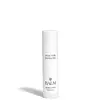What's inside
What's inside
 Key Ingredients
Key Ingredients

No key ingredients
 Benefits
Benefits

 Concerns
Concerns

No concerns
 Ingredients Side-by-side
Ingredients Side-by-side

Ricinus Communis Seed Oil
MaskingWater
Skin ConditioningButyrospermum Parkii Oil
EmollientGlycerin
HumectantSimmondsia Chinensis Seed Oil
EmollientBeeswax
Emulsion StabilisingButyrospermum Parkii Butter
Skin ConditioningPolyglyceryl-2 Dipolyhydroxystearate
Skin ConditioningDisteardimonium Hectorite
StabilisingMagnesium Sulfate
Aquaphilus Dolomiae Ferment Filtrate
Skin ConditioningArginine
MaskingBenzoic Acid
MaskingCaprylyl Glycol
EmollientGlycyrrhetinic Acid
Skin ConditioningHelianthus Annuus Seed Oil
EmollientHydroxycapric Acid
Skin ConditioningPentylene Glycol
Skin ConditioningTocopherol
AntioxidantTromethamine
BufferingXanthan Gum
EmulsifyingZinc Sulfate
AntimicrobialRicinus Communis Seed Oil, Water, Butyrospermum Parkii Oil, Glycerin, Simmondsia Chinensis Seed Oil, Beeswax, Butyrospermum Parkii Butter, Polyglyceryl-2 Dipolyhydroxystearate, Disteardimonium Hectorite, Magnesium Sulfate, Aquaphilus Dolomiae Ferment Filtrate, Arginine, Benzoic Acid, Caprylyl Glycol, Glycyrrhetinic Acid, Helianthus Annuus Seed Oil, Hydroxycapric Acid, Pentylene Glycol, Tocopherol, Tromethamine, Xanthan Gum, Zinc Sulfate
 Reviews
Reviews

Ingredients Explained
These ingredients are found in both products.
Ingredients higher up in an ingredient list are typically present in a larger amount.
Ricinus Communis Seed Oil is the INCI name for castor oil.
Castor Oil helps moisturize the skin. It is rich in a fatty acid called ricinoleic acid. This fatty acid helps prevent moisture loss on the skin. This helps keep your skin soft and hydrated. Ricinoleic acid also has anti-inflammatory and pain reducing properties.
Besides hydrating the skin, castor oil is also used to hydrate hair. By keeping the hair shaft moisturized, breakage is decreased. More studies are needed to show castor oil's effective on stimulating hair growth.
Castor oil is created by cold-pressing castor seeds and then purifying the oil with heat. It was used in Ancient Egypt as fuel in lamps and to help treat eye irritation.
The term 'fragrance' is not regulated in many countries. In many cases, it is up to the brand to define this term. For instance, many brands choose to label themselves as "fragrance-free" because they are not using synthetic fragrances. However, their products may still contain ingredients such as essential oils that are considered a fragrance.
Learn more about Ricinus Communis Seed Oil